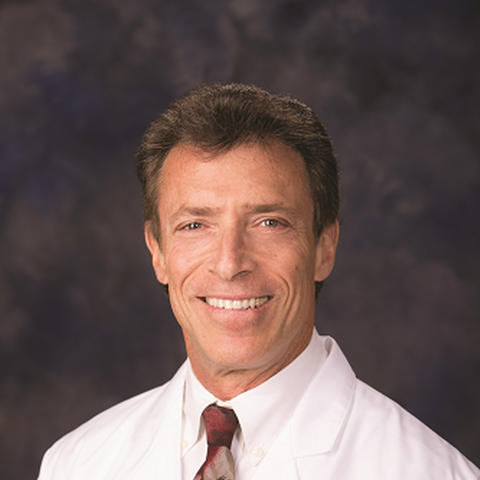Pursuing a Higher Quality of Life

Stark recalls his frustration at missing the reunion. “I called Dr. Rubin and told him, ‘It’s time; we’re going to do that ablation.” He was referring to previous consultations with Andrew Rubin, MD, Board Certified in Cardiovascular Disease and Cardiac Electrophysiology, with whom he had discussed potential cardiac ablation treatment at Eisenhower Desert Cardiology Center.
Stark’s arrhythmia condition goes back more than two decades. In 2002, he underwent coronary artery bypass grafting to repair three blocked arteries (triple bypass). The night before discharge, Stark suffered a severe episode of AFib that landed him in the ICU. He was later diagnosed with paroxysmal AFib, an irregular heartbeat characterized by periodic episodes that can last anywhere from a few minutes up to seven days.
Although, he can’t always pinpoint the symptoms, Stark almost knows when his heart is out of rhythm and he has to be careful about staying hydrated. Under the watchful eye of his cardiologist, Chanaka Wickramasinghe, MD, and Dr. Rubin, Stark has been on antiarrhythmic medications for 21 years.
“I’ve had to switch medications more than once due to side effects, including a thyroid issue,” Stark says. “I’ve been on TIKOSYN® for the last two years, which required a three-day hospital stay when I started on it to determine whether the medicine was right for me.”
The switch to TIKOSYN partially controlled the AFib, but there were periodic episodes impacting his active lifestyle. He is passionate about golfing and is a longtime and dedicated volunteer for Mended Hearts of Coachella Valley. Along with serving two terms as president and as an accredited visitor of the program, Stark, in addition to 11 other dedicated, accredited visitors, regularly visits heart patients and their families in the hospital to offer hope, encouragement and education.

“The main objectives of cardiac ablation are to restore a normal heart rhythm, alleviate or minimize symptoms, and reduce reliance on medications that may not be well tolerated,” explains Dr. Rubin. “In Bill’s situation, persistent palpitations significantly impacted his quality of life.”
On October 10, 2023, Stark underwent cardiac ablation, a less than three-hour, minimally invasive procedure performed under general anesthesia. The surgery involves inserting a catheter through the femoral veins to target specific cardiac tissue. Radiofrequency energy cauterizes the tissue, interrupting the abnormal electrical pathways that cause AFib. During the procedure, Dr. Rubin employed a TactiCath™ Contact Force Ablation Catheter, Sensor Enabled™ that integrates with three-dimensional electrophysiological mapping.
“This technology enables more precise images of the heart,” says Dr. Rubin. “The TactiCath also features an irrigation system at the tip of the catheter that minimizes char formation, allowing us to create more durable lesions while keeping the tissue surface cool.”
Dr. Rubin notes that with the advances in cardiac ablation technology, nearly everyone with symptomatic atrial fibrillation could be considered for ablation. In 2023, the American College of Cardiology® Atrial Fibrillation Guidelines consider young patients with symptomatic paroxysmal AFib, a class one indication for ablation as treatment of choice.
Following an ablation procedure, patients are discharged the same day or the following morning, and are back in the office or on the golf course within a few days. Studies have shown the success rate for a complete cure is 70% and there is an 80% likelihood that the patients will have significantly improved clinical benefit without an actual complete cure.
“Those are significant numbers relative to quality of life,” says Stark. “I’m happy with the results of my ablation — I wish I’d had it done sooner.”
For more information or to contact Eisenhower Desert Cardiology Center, call 760.346.0642 or visit EisenhowerHealth.org/Cardiology.
Eisenhower Health and Mended Hearts of Coachella Valley are in partnership to provide educational programs in-person and online, October through June, followed by an in person support group meeting. For more information about Mended Hearts, contact Dick Freiman at 760.501.5096. For a list of cardiac educational programs, see EisenhowerHealth.org/Calendar.



